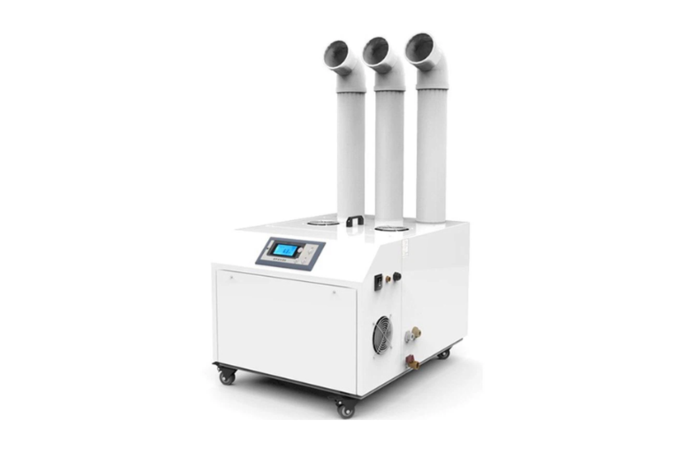Maintaining a proper humidity level is important for the health and productivity of greenhouse plants. A greenhouse humidifier helps add balanced moisture to the air. Whether you are cultivating orchids, tropical plants, or vegetables, humidifiers can play an important role in enhancing the growth of your greenhouse plants. This blog has explained the types, features, benefits, and considerations of greenhouse humidifiers.
Importance of Humidity in Greenhouse Environments
To provide the right growth to greenhouse plants, maintenance of proper humidity is crucial. Humidity can affect various aspects of plant growth including transpiration, nutrient uptake, and disease prevention. Maintaining proper humidity levels promotes the efficient exchange of gases so that plants can receive the necessary amount of carbon dioxide for photosynthesis.
By maintaining high humidity levels excessive water loss can be prevented through transpiration. This keeps the plant hydrated and reduces the risk of wilting. Due to low humidity level faster transpiration can occur, which can lead plants to dry out quickly. This can affect the growth of plants.
A greenhouse humidifier maintains proper humidity which is between 50% to 70%. This range is suitable for most of the greenhouse plants but some specific plants require different levels. By keeping a proper check on humidity level an environment that mimics natural conditions can be created for proper growth of plants.
Types of Greenhouse Humidifiers
There are various types of humidifiers available in the market. Each has its own set of benefits and usage. You can choose the humidifier depending on your needs.
-
Fogging Systems: Fogging systems produce a fine mist that is distributed throughout the greenhouse. These systems are highly effective in increasing humidity levels and can be used for both small and large greenhouses. Fogging systems can be automated, making them convenient to use.
-
Evaporative Coolers: Evaporative coolers, also known as swamp coolers, are an economical option for greenhouse humidification. These systems work by evaporating water, which in turn cools the surrounding air and increases humidity. Evaporative coolers are best suited for areas with low humidity levels.
-
Ultrasonic Humidifiers: Ultrasonic humidifiers use ultrasonic vibrations to create a fine mist that is released into the greenhouse. These humidifiers are quiet, energy-efficient, and easy to use. They are suitable for small to medium-sized greenhouses.
-
Steam Humidifiers: Steam humidifiers generate steam by heating water, which is then released into the greenhouse. These humidifiers are effective in raising humidity levels quickly and are suitable for large-scale greenhouse operations. However, they may require professional installation and regular maintenance.
Factors to Consider When Choosing a Greenhouse Humidifier
When choosing a humidifier for your greenhouse several factors need to be considered.
-
Greenhouse Size: Greenhouse size is crucial in determining the type of humidifier that is required. Large greenhouses require more powerful humidifiers as compared to smaller greenhouses.
-
Humidity Control: Look for a humidifier that offers accurate humidity control. Adjusting settings allows you to maintain the humidity level that is required for your plants.
-
Water Source: Consider the availability of a water source in your greenhouse. Some humidifiers need a direct connection of water whereas others may have an in-built tank.
-
Energy Efficiency: Look for energy efficient humidifiers to reduce cost of operations. Humidifiers with energy saving features such as automatic shut off and programmable timers are a good energy efficient choice.
-
Maintenance and Cleaning: Regular maintenance and cleaning is required for smooth performance of humidifiers. Look for humidifiers which are easy to clean.
Benefits of Using a Greenhouse Humidifier
-
Enhanced Plant Growth: Proper humidity levels promote healthy plant growth, leading to stronger stems, vibrant foliage, and increased productivity.
-
Disease Prevention: Maintaining proper humidity can help prevent the spread of fungal diseases, such as powdery mildew, which thrive in humid conditions.
-
Improved Pollination: Sufficient humidity levels support proper pollination, increasing fruit and flower production in your greenhouse.
-
Reduced Stress: Consistent humidity levels reduce stress on plants, minimising the risk of wilting, leaf burn, and other stress-related issues.
-
Extended Growing Season: With a humidifier, you can extend your growing season by creating a controlled environment that protects your plants from extreme weather conditions.
-
Increased Plant Variety: By controlling humidity, you can expand the range of plant species you can grow in your greenhouse, including those that require higher humidity levels.
Conclusion
A greenhouse humidifier is a crucial necessity in order to maintain the proper humidity levels needed for your greenhouse plants to grow. By recognizing the significance of humidity, examining various humidifier options, and taking important factors into account when selecting one, you can make an aware choice.
At hydrofoggers.com you can get greenhouse humidifiers according to the needs of your greenhouse.



























